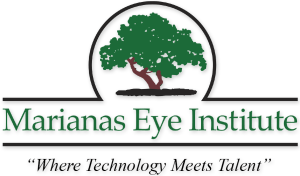
As children grow, their eyes change quickly. Being vigilant about eye health is important to help identify and address problems early, while children’s eyes are still developing. For 2020: Year of the Eye, the American Academy of Ophthalmology presents 20 important things to know about kids’ eyes. Let’s start off with 7 things to know about babies eyes.
1. Smoking can harm an unborn child’s eyes. Smoking during pregnancy increases the risk for premature birth. Preemies are more likely to have permanent vision loss or even blindness. Smoking while pregnant also leads to a five-fold higher risk of the baby getting bacterial meningitis. Bacterial meningitis can cause severe vision loss.
2. For preemies, measure the baby’s vision milestones from their due date — not their date of birth. Your pediatrician should check your infant’s vision at each well-baby visit to make sure it is developing as it should.
3. During a baby’s first months, their central vision is still developing. A newborn baby can see, but they are still forming connections between their retina and their brain. As central vision develops, a baby may begin to focus on objects dangled right in front of them.
4. By age 3 months, a baby’s eyes should focus and follow objects. In the first two months of life, an infant’s eyes may appear to cross or wander out to the sides. This is usually normal. As visual coordination improves, the baby’s eyes will work together to focus and follow a moving object. If you do not notice this happening consistently by age 3 months, talk with your pediatrician.
5. By age 5 months, babies are seeing in three dimensions. At this age, babies get better at reaching for objects because they can see how far an object is from them. They are developing depth perception. They may even remember what an object is if they only see part of it.
6. Around age 9 months, babies’ eyes have turned their final color. Eye color depends on the amount and distribution of a brown pigment called melanin in the iris. Light-colored eyes at birth may darken if melanin develops. It is not uncommon, however, to see slight changes in eye color during the first three years of life.
From the American Academy of Ophthalmology. Written By: Reena Mukamal; Reviewed By: Stephen N Lipsky MD










